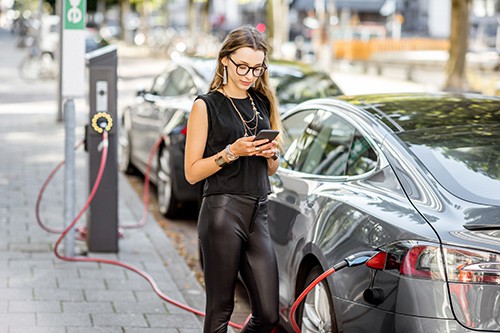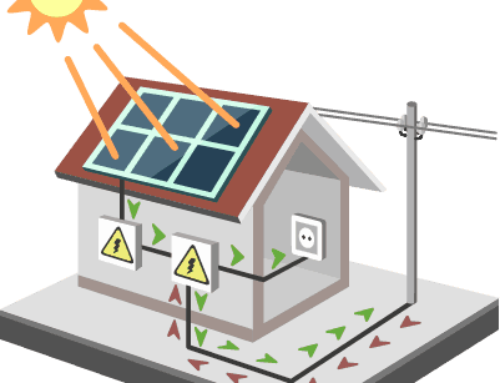As the sales for electric vehicles continue to rise, the need for charging stations continues to rise as well.

Many people are left to wonder how they can find the best place to catch a charge as they hit the road. It may seem like a difficult task since you can’t just charge anywhere unless you own a Tesla (they embrace their own network of stations, and most are more capable than a standard station), but it’s not as hard as many think it is. In fact, new construction embraces plug-in electric for EVs in the parking garage.
There are resources you can use in order to find a charging station to plug in your electric vehicle, so you don’t get left with a dead battery. Finding charging ports couldn’t be easier, as Google implements technology to make finding them easier. There are a few things that you’ll need to know from the beginning to ensure the least amount of stress surfaces. This includes:
- How to find the locations of the various charging networks in the US.
- The different types of charging stations that are available.
- What connectors there are and which car outlet adapter you need for your electric vehicle.
Behold, our guide to Tesla charging stations while uncovering the truth behind the universal charging station concept. It’s just another way we continue to pave the way for a world powered by solar energy.

Which EV charging stations can I use?
With the different types of EVs and batteries comes a variety of EV charging station types. Each car outlet adapter also has a lot to do with which station you can use. Tesla models can charge anywhere whereas other types of EVs simply can’t.
· Level 1 Charging Stations
Designed to be used with standard 120V electric outlets, this charger connection is one of the most basic ways to charge your Tesla with standard electric. It only produces about 1kw of charging power causing it to take longer than other methods. For a full charge, expect it to take between 8 and 12 hours. For those with smaller electric vehicles, it’s a good choice. Not so much with bigger models.
· Level 2 Charging Stations
This is a step up from level 1 charging stations, as it’s able to produce anywhere between 3 and 20 kw of charging power. This reduces the amount of time it takes to charge your electric vehicle down to 3-8 hours rather than up to 12 hours like with level 1 charging stations. It is also available to use with standard electric, provided some modifications may need to be made.
· DC Fast Chargers
Producing between 50kW and 120kW, it’s safe to say that this type of charge blazes past level 1 and level 2 charging stations. What this means is that in just a half hour, you can charge your electric vehicle to last for an additional 170 miles. It’s a move in the direction of making it more comfortable to travel long distances using EVs.
· Superchargers
At the time of writing this, Supercharging stations are the world’s fastest way to charge your Tesla. However, technology is advancing, and superchargers vehicles require is going to be replaced by faster solutions as time progresses. Until then, if you need the fastest charge these stations that provide superchargers vehicles need might be worth looking out for on those long road trips. You only need about 30 minutes to get a charge capable of taking you a significant distance.
· The Future of EV Charging Stations Revealed
Tesla has probably jumped ahead of the gun on this one. They’ve went as far as creating a charging station with a lounge where the kids can play while consumers enjoy a cup of coffee. What was meant to be a solution to waiting anywhere from 30 minutes to an hour to continue the trip may be a learning experience they’ll have to embrace. Especially since the way Tesla has made their charger connection is to ensure only their customers use their stations.
Porsche and Electrify America have announced a plan to launch fast charging stations that are faster than the Supercharger stations Tesla rolled out for its supercharger brands, eliminating the need for extended wait times while charging. Therefore, Elon might be forced to realize that he shouldn’t have gotten comfortable with his Supercharging solutions. Now is the time when supercharger brands just might see a better way of life.

Where can I find Tesla supercharger stations?
Tesla has worked hard to make using their EVs as simple as it can get by embracing the ability to charge anywhere. You can access a map of supercharger stations in the car as well as via the Tesla website. Planning out your trip is easier than it has ever been with electric vehicles. With a growing network of supercharger stations, you will soon find out that the stress of running out of juice has been eliminated.

Where can I find other EV charging stations?
You used to have to keep your eyes open for EV charging signs placed at strategic locations throughout the United States for universal charging stations. However, Tesla isn’t the only company contributing to the world of clean energy. Google has implemented EV charging stations within Google Maps (for both types, a standard station as well as fast charging locations), making it as easy as pulling up the app to see where you can charge non-Tesla vehicles.

How much does it cost to charge electric vehicles?
This depends upon the charging method (whether it’s supercharger brands or if it’s a universal charging station for example), electric vehicle model, and the power source that you’ll be using to charge your car. Keep in mind that the rates for electric will fluctuate depending on the time of day. When electric is in high demand, you’ll find that it’s going to be more expensive than if you were to charge your vehicle during the overnight hours.
Let’s do the math real quick using the national average of $0.13 per kWh (Kilowatt Hour). On a 50-kWh battery you would encounter the cost of $6.50. Whereas on a 75-kWh battery you’ll be charged $9.75 to charge your battery. Keep in mind that you most likely won’t deplete your battery completely each day so it’s safe to say that the cost will only run around a couple of bucks daily.
One more thing to take into consideration is that if you use a charging station, you could be able to receive free charges with the Tesla Model S and the Tesla Model X. This is only at Tesla charging stations though, and it’s used to encourage EV users to purchase these models over others.

Best Apps for Finding Charging Stations
Every day a new app comes out, but we’re not going to bombard you with an endless list. Instead, we’ve decided to feature the top 3 apps for finding electric vehicle charging stations. While we didn’t list Google, that’s one thing you don’t want to forget. Without further ado, here they are.
· Open Charge Map
Suitable for pre-trip planning and on the road, it embraces navigation features in an effort to simplify the process of finding the exact location of charging stations. Add to it the pictures that it also provides, and you have one of the most precise apps currently on the market.
· PlugShare
This has become one of the most popular apps among electric vehicle owners. You put your location into the app and it will let you know which stations are closest to you. Straight-forward is how this app has set itself apart from the others.
· Recargo
This is an implementation of social media and EV charging stations. It gives you a firsthand look at what you can expect when you arrive at one of the charging stations that it covers. For those who don’t like surprises, this is a great app.
The advancement of using clean energy to get us from point A to point B only makes it easier to be more environmental-friendlier. Not to mention, help us choose a more affordable mode of transportation. It is safe to say that this will only continue to grow. The parking garage will continue to see plug-in electric installations for EVs and homes will be equipped to handle the charging of vehicles.
For the latest breakthroughs and guides, make sure you keep Going Solar top of mind. We’re here to cover it every step of the way. Ensuring the world is powered with what they need to know about clean energy is simply what we do daily.

